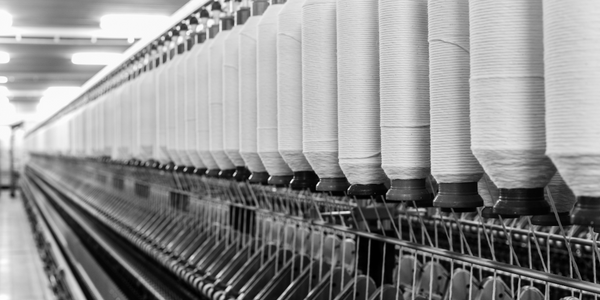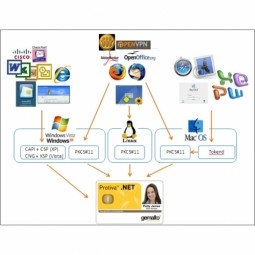技术
- 应用基础设施与中间件 - 数据可视化
- 功能应用 - 企业资源规划系统 (ERP)
适用行业
- 服装
- 生命科学
适用功能
- 物流运输
- 采购
用例
- 数字孪生
- 供应链可见性(SCV)
关于客户
该客户是优质生活方式产品设计、营销和分销领域的全球领导者。他们经营五个类别:服装、配饰、家居、香水和酒店。该公司致力于可持续发展,专注于高效、及时的原材料采购和利用、资源效率以及减少公司和合作伙伴网络的浪费。他们正在寻求一种解决方案来转变其端到端规划能力,更快地响应市场机会和供应中断,并通过提供透明度和灵活性来降低库存风险。
挑战
该客户是优质生活方式产品设计、营销和分销的全球领导者,在供应链和规划能力方面面临着多项挑战。他们希望更快地响应市场机会和供应中断,需要具有可扩展的能力来推迟有关数量、型号、目的地、价格和流量的决策。这将通过提供透明度和灵活性来降低库存风险。该公司还难以快速识别产品交付周期和市场关闭之间的行动,并且规划和购买策略缺乏一致性。此外,时尚行业的波动性给原材料采购、染色批次、裁剪等的时间和数量带来了优化挑战,以确保满足客户需求。最后,由于存在多个品牌、地点、分销渠道和供应商,该公司发现很难在专注于异常管理的低接触数字环境中进行有效沟通和工作。
解决方案
公司采用o9的企业知识图谱和供应商协作能力,与客户和供应商进行数字化连接,确保同步规划和决策。 o9 的供应链求解器用于确定行动的理想推迟时间,并就这些活动和日历预期与供应商进行合作。这增加了更准确地满足客户需求的能力。该公司还利用 o9 的协作工具和端到端企业知识图谱来使角色、地理位置和组织保持联系和高效。企业知识图用于实施供应计划和供应商协作,目标是优化决策日历,通过工厂运输连接季节性计划,并通过提高供应链敏捷性来应对需求波动。替换的系统是自主开发的解决方案和 Excel。
运营影响
数量效益

Case Study missing?
Start adding your own!
Register with your work email and create a new case study profile for your business.
相关案例.

Case Study
Fire Alarm System and Remote Monitoring Sytem
Fire alarm systems are essential in providing an early warning in the event of fire. They help to save lives and protect property whilst also fulfilling the needs of insurance companies and government departments.Fire alarm systems typically consist of several inter-linked components, such as smoke detectors, heat detector, carbon monoxide, manual call points, sounders, alarm and buzzer. The fire alarm system should give immediate information in order to prevent the fire spread and protect live and property.To get maximum protection a shoe manufacturer in Indonesia opted for a new fire alarm system to monitor 13 production sites spread over 160 hectars. Although the company had an existing fire alarm system, it could not be monitored remotely.It was essential that the new system would be able to be monitored from a central control room. It needed to be able to connect to the existing smoke detector and manual call point. Information should be easily collected and passed on to the Supervisory Control and Data Acquisition (SCADA) system. Furthermore, the system should have several features such as alarm management, auto reporting, being connected to many client computers without additional cost, and run 24/7 without fails. The company also needed a system which could be implemented without changing the architecture of the existing fire alarm system.

Case Study
IoT Applications and Upgrades in Textile Plant
At any given time, the textile company’s manufacturing facility has up to 2,000 textile carts in use. These carts are pushed from room to room, carrying materials or semi-finished products. Previously, a paper with a hand-written description was attached to each cart. This traditional method of processing made product tracking extremely difficult. Additionally, making sure that every cart of materials or semi-finished products went to its correct processing work station was also a problem. Therefore, the company desired an intelligent solution for tracking assets at their factories. They also wanted a solution that would help them collect process data so they could improve their manufacturing efficiency.

Case Study
Retailer Uses RFID Scanner to Improve Efficiency
Patrizia Pepe wished to improve the logistics of their warehouse: accepting incoming goods from their production sites, movement of items throughout
the warehouse, and packaging of goods for distribution to the retail locations. They initially tried to use barcodes for this function. Because barcodes must be individually scanned within a line-of-sight, the acceptance of goods coming into the warehouse was too time consuming. Working with the University of Florence, Patrizia Pepe instituted a five-month pilot project beginning in August of 2009 to test the validity of an RFID solution. The pilot involved tagging of about 60,000 items for the second seasonal collection, and convinced the company to move forward with tagging all items.

Case Study
Monitoring and Controlling Automatic Mixing and Dispensing Machines
As technology advances, textile manufacturing has been transformed from a labor-intensive to a partially or fully automated industry. Automation is significant in all segments of textile production - from spinning to printing, and textile machinery manufacturers are constantly searching for new technologies and automation processes will increase the productivity of their machines. The color paste mixing and dispensing machine is an essential part of the printing and dyeing process. With the advantage of automatically computerized controls and database management, the system can significantly improve its dispensing precision, working efficiency and production quality as well as reducing material consumption.

Case Study
Corporate Identity Solution Adds Convenience to Beckman Coulter
Beckman Coulter wanted to implement a single factor solution for physical and remote logical access to corporate network. Bechman Coulter's users were carrying smart card badges for doors, but also needed a one-time password token to access to our corporate network when they were not in the office. They wanted to simplify the process.








